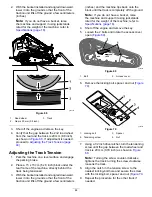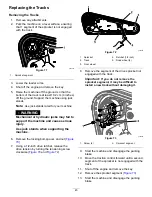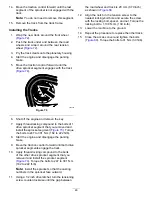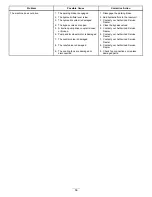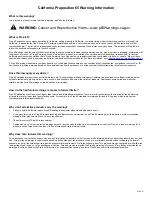
Troubleshooting
Problem
Possible Cause
Corrective Action
1. Dirt, water, stale fuel, or incorrect fuel
is in the fuel system.
1. Drain and flush the fuel system; add
fresh fuel.
2. The fuel filter is clogged.
2. Replace the fuel filter.
3. The improper fuel grade for cold
weather is in the machine.
3. Drain the fuel system and replace
the fuel filter. Add fresh fuel of
proper grade for ambient temperature
conditions. You may need to warm the
entire traction unit.
The engine does not start.
4. The battery is discharged.
4. Charge the battery or replace it.
1. The fuel tank is empty.
1. Fill the tank with fresh fuel.
2. There is air in the fuel.
2. Bleed the fuel system and check for
air leaks at fuel hose connections
and fittings between the fuel tank and
engine.
3. The engine is overheating.
3. Refer to “The engine overheats.”
4. The engine load is excessive.
4. Reduce the load; use a lower ground
speed.
5. The crankcase-oil level is incorrect.
5. Fill or drain to the Full mark.
The engine loses power.
6. The air-cleaner filters are dirty.
6. Service the air filters.
1. The fuel tank is empty.
1. Fill the tank with fresh fuel.
2. There is air in the fuel.
2. Bleed the fuel system and check for
air leaks at fuel hose connections
and fittings between the fuel tank and
engine.
3. The engine is overheating.
3. Refer to “The engine overheats.”
The engine starts but does not keep
running.
4. The air-cleaner filters are dirty.
4. Service the air filters.
1. The crankcase-oil level is incorrect.
1. Fill or drain to the Full mark.
2. The alternator belt is broken or
elongated.
2. Replace the belt or adjust the belt
tension.
3. More coolant is needed.
3. Check and add coolant.
4. Concentration of antifreeze is too high.
4. Add water only or change to coolant
with the specified mixing ratio.
5. There is restricted air flow to the
radiator.
5. Inspect and clean the radiator screen.
6. The inside of the radiator is corroded.
6. Clean or replace the radiator and parts.
7. The radiator or radiator cap is
damaged.
7. Replace the damaged parts.
8. The thermostat is defective.
8. Check the thermostat and replace it if
necessary.
9. The temperature gauge or sensor is
defective.
9. Check the temperature with a
thermometer and replace the gauge or
sensor if necessary.
10. The engine load is excessive.
10. Reduce the load; use a lower ground
speed.
The engine overheats.
11. The head gasket is damaged or there
is water leakage.
11. Replace damaged parts.
55




